Goldfish Farming in the Philippines presents a promising venture for aquaculture investors. This blog explores the art of cultivating goldfish for profit. The rich aquatic resources and suitable climate of the Philippines provide an ideal environment for goldfish farming. Discover the key techniques, from breeding to maintaining water quality, that contribute to a successful and lucrative goldfish farming enterprise in this tropical haven.
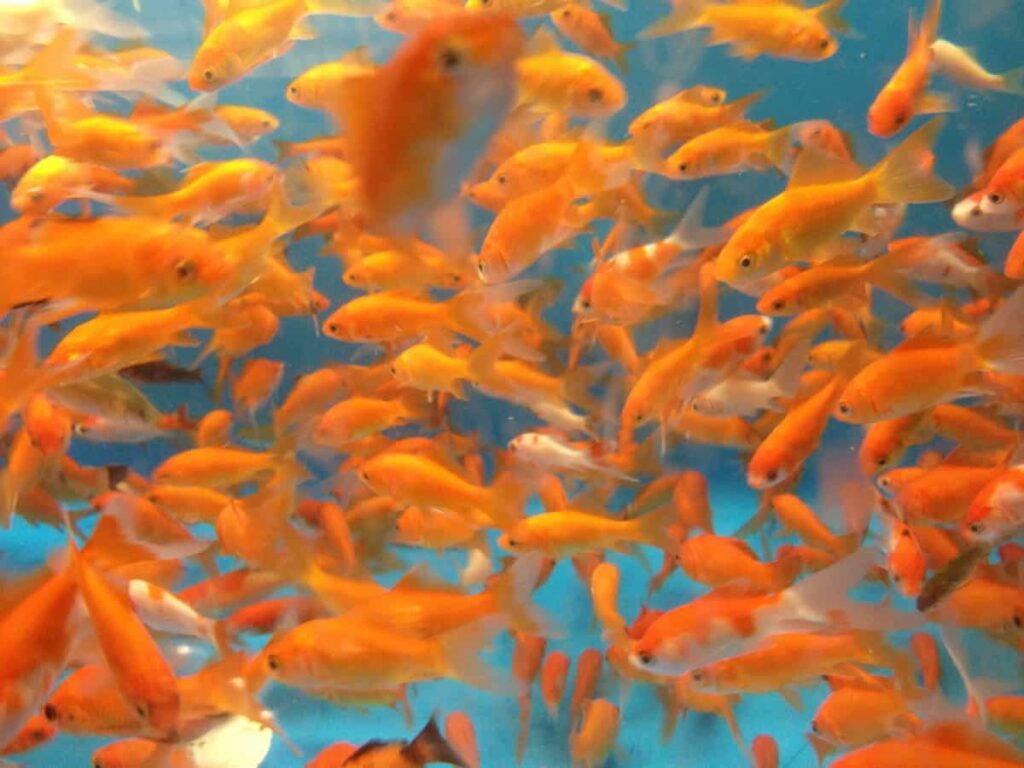
Introduction to Goldfish Farming in the Philippines
Goldfish farming in the Philippines combines history, adaptation, and economics. Originating as a variant of the carp Carassius auratus, goldfish have been cultivated for centuries, with favorable aquatic conditions and climate setting the stage for successful cultivation. The selective breeding of goldfish, dating back over a millennium, has captivated enthusiasts and farmers worldwide.
Goldfish cultivation has evolved with the times, with meticulous steps in the production process, including breeding stock selection, spawning rituals, and pond preparation. The 2018 Aquaculture Census shows the industry’s financial pulse, with over $1 million in goldfish sales. Diverse pricing tiers cater to consumer preferences, with market accessibility, cost projections, and quality assurance interweaving with the quest for profitability.
Stealing the course of goldfish farming requires astute marketing considerations, navigating supply chains, customer relations, and regulatory compliance. The delicate balance between supply and demand governs the harvest and its subsequent success. Financial foresight and strategic investments illuminate the path forward for those seeking to venture into this aquatic realm. Goldfish farming in the Philippines and beyond remains an emblem of cultural heritage and scientific innovation, exemplifying the harmony between human ingenuity and the aquatic world.
In case you missed it: Grouper Fish Farming Business Plan: Ultimate Guide to Breeding and Reproduction Techniques
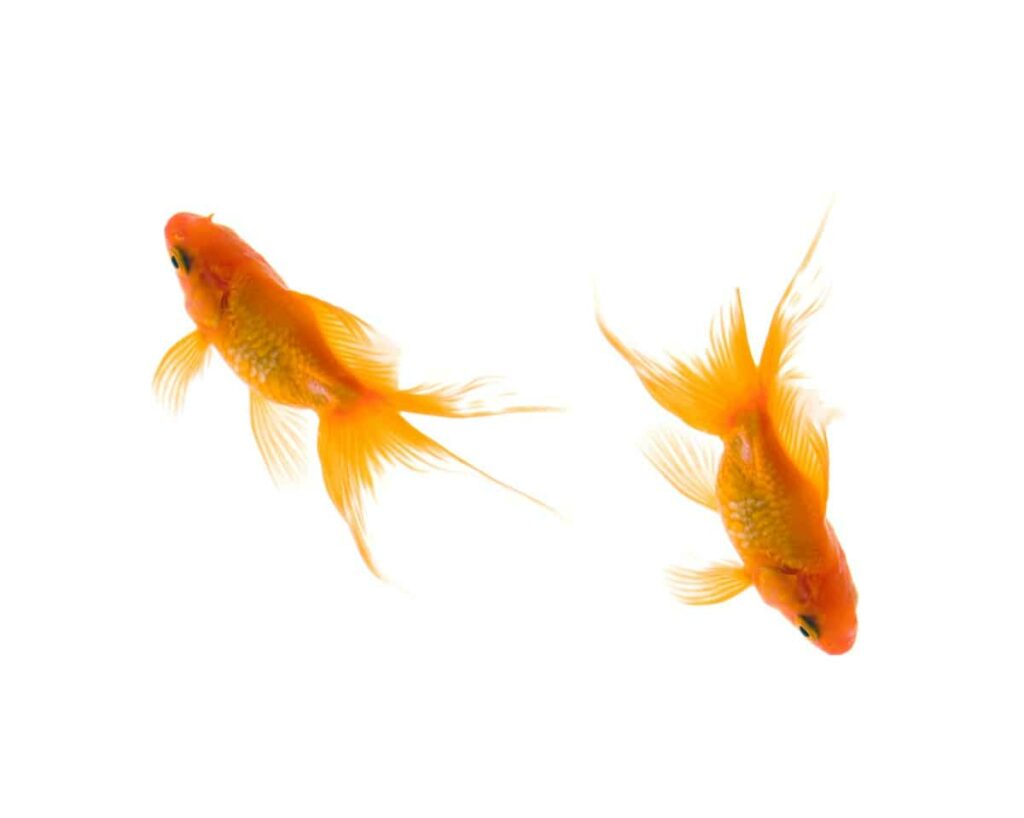
Goldfish Farming: Methods and Considerations
Goldfish farming is the commercial practice of breeding and raising goldfish for profit. It involves controlled processes from spawning to maturity, catering to the growing demand for these aquatic pets. Various approaches are employed, each with distinct merits and limitations.
- Pond Farming: Among the prevalent methods, pond farming utilizes natural environments, offering a more authentic setting for goldfish. However, pond maintenance and water quality can be challenging, limiting its widespread suitability.
- Tank Farming: Tank or aquarium farming employs artificial enclosures, providing better water quality and maintenance control. While more convenient than ponds, setting up tanks can be cost-prohibitive.
- Bowl Farming: A lesser-known approach, bowl farming employs bowls for rearing. While cost-effective, it lacks larger setups’ filtration and water quality control.
Understanding the Market Potential for Goldfish Farming
- Breeding Stock Selection: Begin with young fish, focusing on desired colors and body shapes. Some mature at one year, weighing 2 to 4 pounds, with some kept for years. Careful handling is crucial for future breeders.
- Spawning Process: Outdoor tanks, vats, or ponds are preferred for spawning when water reaches 60°F in spring. Spawning mats collect eggs, which can then be moved for rearing. Proper pond preparation and fertilization aid plankton as fish food.
- Fry Development: After about six weeks, newly hatched fry reach around ¾ inches in size. They’re graded and stocked for further growth. Stocking and feeding rates influence harvest age and size.
- Diverse Stocking Densities: Vary pond densities (25,000 to 1 million fish per acre) for uniform product shipments. This might demand significant investment and competition with established producers.
- Market Insights: The 2018 Census of Aquaculture reported $1.162 million in goldfish sales from 35 farms, with a farm gate price of $3.55 per pound for feeder and bait goldfish. Ornamental goldfish prices ranged from $0.75 to $5.23.
- Market Availability: Synchronize production with available markets to avoid excessive costs. The value lies in quality control, customer service, and finding reliable outlets for fish sales.
- Cost Projections: Detailed projections compare costs to prevailing market prices for intended fish sizes and quality. The economy of scale is vital for cost efficiency.
- Supplier Reliability: Ensure trustworthy input suppliers, considering feed, equipment, and chemicals. Secure consistent supply, pricing, and quantities.
- Profitability Challenges: Small-scale feeder goldfish production requires competitive advantages for profitability. Ornamental Fish focus on product quality and ease of market entry.
In case you missed it: From Water Quality to Feeding Habits: A Comprehensive Guide to Successful Fishpond Management

Selecting the Ideal Location for a Goldfish Farm
Selecting an optimal location for a goldfish farm involves scientific considerations. Water quality is paramount, with pH, temperature, and dissolved oxygen crucial for fish health. Proximity to water sources ensures a steady supply. Goldfish farming is a profitable commercial practice that involves controlled processes from spawning to maturity.
There are three main methods: pond, tank, and bowl. Pond farming uses natural environments, offering an authentic setting but can be challenging to maintain and maintain. Tank farming uses artificial enclosures, providing better control over water quality but can be costly. Bowl farming uses bowls for rearing but lacks filtration and water quality control.
Guide to Setting Up a Goldfish Farm
- Select Goldfish Type: Research a variety suitable for your climate and facilities.
- Acquire Tanks and Filtration: Build or buy tanks with proper filtration and aeration. Include tanks for breeding stock if selling baby goldfish.
- Choose Food Source: Opt for live food like brine shrimp or pellets/flakes designed for goldfish nutrition.
- Test Water Quality: Ensure correct pH, ammonia, and nitrite levels. Test water quality at a local aquarium store before introducing fish.
- Gradual Population Increase: Begin with a small number of fish, gradually increasing as you gain confidence in their care.
- Climate-Suited Variety: Choose goldfish types suitable for your climate to ensure their well-being.
- Adequate Space: Provide ample space in tanks or ponds for swimming and growth, preventing stress.
- Water Quality Maintenance: Regularly monitor water parameters and maintain high-quality water through filtration and changes.
- Nutrient-Rich Diet: Feed goldfish with protein-rich, nutrient-balanced food for growth and health.
Setting Up the Infrastructure and Facilities for Goldfish Farming
Adequate pond or tank space is essential, accounting for anticipated fish numbers and growth. To maintain optimal conditions, water quality management requires efficient filtration systems and oxygenation equipment. Temperature control mechanisms ensure a favorable environment for breeding and growth.
In case you missed it: The Rise of Fish Farming in Nigeria: Key Rules to Start from Scratch
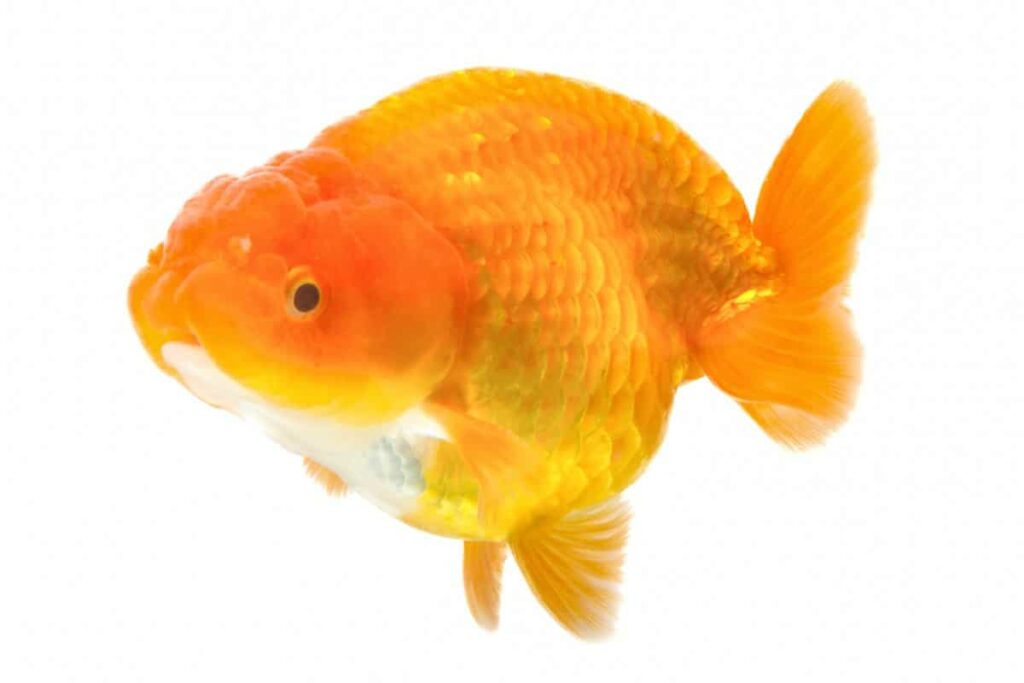
Reliable water sources and efficient drainage systems are fundamental. Additional essentials encompass feeding equipment, spawning mats, and monitoring tools for health assessment. Facilities should align with the chosen farming method, pond, tank, or bowl farming.
Choosing the Right Goldfish Species for Farming
The appropriate goldfish species for farming in the Philippines requires considering climate compatibility and market demand. Varieties like the Common Goldfish (Carassius auratus) and the Comet Goldfish thrive in tropical conditions due to their adaptability.
These species are hardy and well-suited to the warmer climate, making them ideal choices. Additionally, Fancy Goldfish types such as the Oranda and Ryukin, known for their unique appearances, can be cultivated for the growing ornamental fish market in the Philippines.
Sourcing Quality Goldfish Fingerlings or Broodstock
Obtaining high-quality goldfish fingerlings or broodstock in the Philippines demands a strategic approach based on scientific principles. Identify reputable hatcheries or suppliers known for breeding healthy and genetically diverse stock. Inspect the fingerlings for signs of deformities, diseases, and stress.
Verify the source’s water quality and disease management practices to ensure optimal conditions for growth and health. Genetic diversity is vital to avoid inbreeding, which can lead to disease susceptibility. Collaborate with aquaculture experts or local institutions for guidance on sourcing appropriate fingerlings or broodstock, aligning with the Philippines’ unique climatic and water conditions.
Feeding and Nutrition Requirements for Goldfish
Goldfish are omnivores, requiring a balanced diet for optimal growth and health. Offer a mix of commercial pellets, flakes, and live foods like brine shrimp or bloodworms. These foods provide essential proteins, fats, vitamins, and minerals. Avoid overfeeding to prevent water pollution and obesity.
Feed quantities should be consumed within a few minutes to maintain water quality. Regularity in feeding and portion control is key. Supplementing with vegetable matter, like lettuce or peas, supports their digestive system.
Water Quality Management in Goldfish Farming in the Philippines
- pH Level: Goldfish thrive in a pH range of 6.5 to 8.0. Regularly monitor and adjust pH to prevent stress and health issues.
- Temperature: Keep water temperature between 20-24°C (68-75°F) for optimal growth. Sudden temperature fluctuations can harm goldfish.
- Ammonia and Nitrite Levels: These harmful compounds result from waste breakdown. Ammonia should be near zero, while nitrite levels should be undetectable.
- Nitrate Levels: Maintain nitrate levels below 40 ppm, as high levels can stress fish.
- Dissolved Oxygen: Adequate oxygen levels (5-7 mg/L) ensure fish respiration.
- Hardness: A moderate hardness of 100-150 ppm is suitable for goldfish.
- Alkalinity: Maintain alkalinity between 100-200 ppm to stabilize pH.
- Salinity: Goldfish prefer freshwater; salinity should be very low.
In case you missed it: Project Report of Pangasius Fish Farming: Cultivation Economics, Production Cost, and Profit Analysis
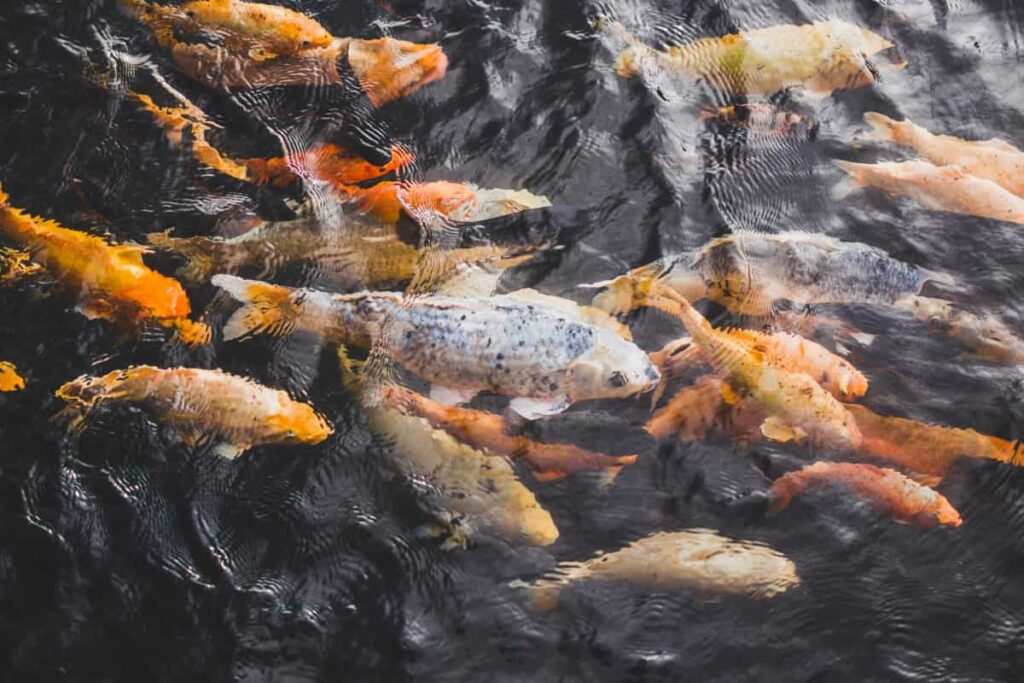
Disease Prevention and Management in Goldfish Farms
Common diseases include Ichthyophthirius (Ich), a parasitic infection causing white spots. Flukes, and external parasites, irritate. Bacterial infections like Aeromonas and Pseudomonas can lead to ulcers and fin rot. Vigilant biosecurity measures are crucial, including quarantine for new fish, regular water quality checks, and avoiding overcrowding.
Implement hygiene protocols and disinfection of equipment and hands before handling fish. Provide a balanced diet and stress reduction through proper habitat conditions. In an outbreak, isolate and treat affected fish with appropriate medications. Proactive management strategies, along with quick identification and treatment.
Breeding Techniques and Practices for Goldfish Farming
- Breeding Age: Goldfish mature sexually around one year old, while full growth takes two to three years.
- Oxygen Requirement: An air pump is necessary to ensure goldfish have sufficient oxygen; inadequate oxygen levels can be fatal within an hour.
- Reproduction Rate: Female goldfish can lay up to 1000 eggs multiple times weekly under optimal water temperatures. Fertile eggs turn transparent, while infertile ones become white.
Growth and Development Monitoring of Goldfish
- Spawning Frequency: Outdoors goldfish may spawn two to three times a season in warmer climates. Stable aquarium water temperatures can lead to year-round spawning.
- Growth Rate: Goldfish grow around an inch annually, with rapid growth in initial months and slower rates as they age. Providing optimum care aids growth.
- Lifespan: Goldfish live about 10-15 years; some species can reach 30 years with proper care. Housing conditions significantly impact their lifespan potential.
Harvesting and Marketing Strategies for Goldfish Farmers
Harvesting: Goldfish are harvested when they reach marketable size, usually around 3-4 inches. Use nets to catch fish, minimizing stress gently. Separate sizes to prevent aggression during transportation.
Marketing: Establish diverse marketing channels, including local pet stores, aquarium clubs, and online platforms. Highlight quality, variety, and healthy fish. Provide clear photos and descriptions for online sales.
Storage: Transport fish in plastic bags filled with oxygen and water for short-term storage. For longer durations, use holding tanks with proper aeration and temperature control.
Financial Analysis and Profitability of Goldfish Farming in the Philippines
Financial analysis of goldfish farming in the Philippines involves assessing costs, pricing, and potential profits. Costs encompass fish, food, tanks, and labor. Goldfish prices range from ₱50 to $400 based on type and location. Shipping expenses should be considered for online or pet store sales. Higher prices can be charged locally due to the absence of shipping costs.
In case you missed it: Project Report of RAS Fish Farming: Production Economics, Cost, and Profit Analysis
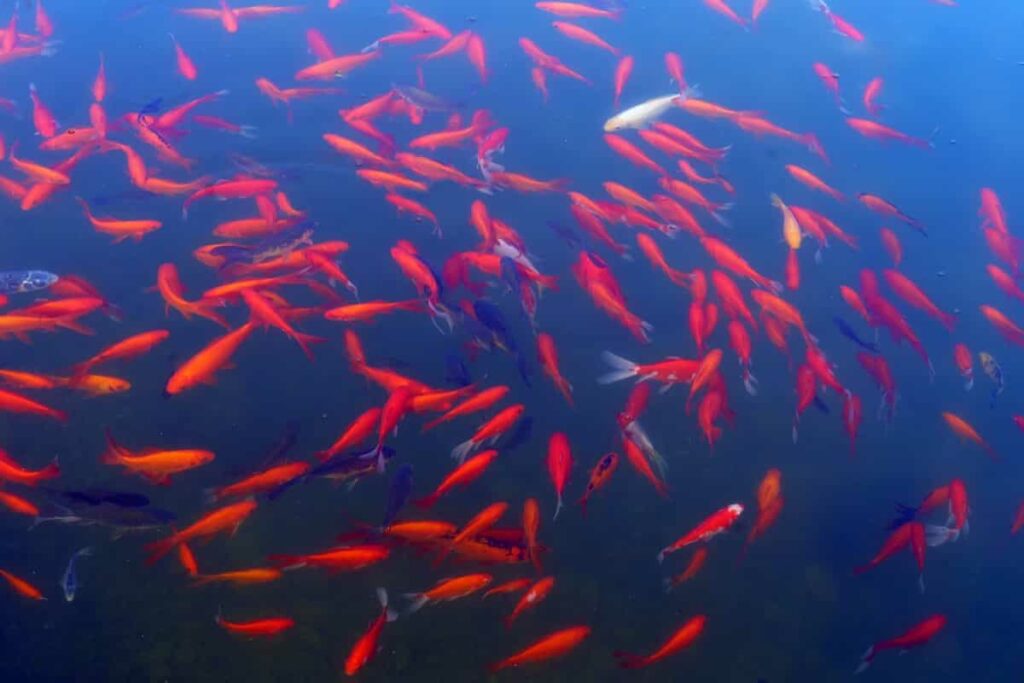
Monthly care for each goldfish is about ₱100, making a 200-gallon tank cost ₱200 monthly. Cleaning and feeding expenses also apply. A 200-gallon aquarium accommodates 20-50 goldfish, requiring separation upon growth. Goldfish grow around one inch annually, with initial rapid growth.
While faster growth methods exist, prioritizing excellent care is crucial. Starting with 50 baby goldfish (5% mortality), selling for ₱4,500 after ten months yields a net profit of ₱2,500. This scenario exemplifies modest-scale goldfish farming with standard stock, emphasizing profitability through prudent financial management.
Government Regulations and Licensing for Goldfish Farms in the Philippines
Goldfish farms in the Philippines must adhere to government regulations and obtain necessary licenses. The Bureau of Fisheries and Aquatic Resources oversees aquaculture activities, including goldfish farming. Farmers should register their farms and secure a Fishpond Lease Agreement or Aquaculture Lease Agreement for land and water use. Environmental clearance and compliance with health and safety standards are essential.
Challenges and Future Prospects of Goldfish Farming in the Philippines
Goldfish farming in the Philippines faces disease outbreaks, water quality maintenance, and market competition. Disease control requires vigilant management and knowledge. Consistently maintaining optimal water conditions can be demanding. Market competition from imported fish poses pricing pressure. However, the prospects remain promising. Growing demand for ornamental fish domestically and internationally offers opportunities. Technological advancements in breeding, disease prevention, and marketing can enhance profitability.
Conclusion
Goldfish farming in the Philippines presents both challenges and opportunities. With careful consideration of breeding techniques, water quality, disease management, and effective marketing strategies, aspiring farmers can tap into the thriving demand for ornamental fish, fostering a profitable and sustainable venture.
- Broccoli Varieties: Choosing the Right Cultivars for Your Farm
- How to Raise Pigs in Your Own Backyard: A Comprehensive Guide
- Budget Friendly Sheep Shed Ideas: Cheap and Low-Cost Tips
- How Much Do Cattle Farmers Make: Revenue Streams in Cattle Farming
- Management Pests and Diseases in Your Cotton Field
- Sheep Farming Business Plan for Beginners
- Aquaponic Farming at Home: A Step-By-Step Guide
- Profitable Village Farming Business Ideas in 2024
- High-Yield Aquaculture: Fast-Growing Fish for Farming
- Effective Fish Pond Construction Techniques for Beginners
- Irrigation and Water Management in Pineapple Farming
- Blossom to Harvest: Mastering Flowering and Pollination in Papaya Farming
- Pig Fattening Essentials: From Selection to Sale for Beginners
- Raising Wagyu Cattle: A Complete Guide for Premium Beef Production
- Soil Types and Their Water Holding Capacity
- Optimizing Irrigation Schedules for Coconut Groves for Enhanced Yield
- Espresso Your Garden: Coffee Grounds for Healthier Acid-Loving Plants
- The Best Soil Mix for Snake Plants: How to Mix Your Own Snake Plant Soil
- Green Thumb Success: Expert Tips for Cultivating Greenhouse Beans All Year Round
- Bloom All Year Round: The Ultimate Guide to Indoor Hyacinth Care
- Eco-Friendly Gardening: How to Make Liquid Fertilizer from Kitchen Waste
- Ultimate Guide to Grow Anise in Pots: Explore Seed Propagation to Harvesting
- Guide to Raising Chester White Pigs: Discover Breed Facts to Growth Management
- Mastering the Elegance: The Ultimate Guide to Weeping Cherry Tree Care, Planting, and Maintenance
- Ultimate Guide to Planting Garlic in Grow Bags: Growing Strategies for Beginners
- How to Fix Spider Plant Leaf-Related Problems: Natural and Organic Remedies
- 10 Reasons Why Your Tulsi Plant is Shedding Leaves: Home Remedies and Solutions
- Optimizing Growth and Yield: The Advantages of Palm Bunch Ash Fertilizer
- Utilizing Neem Oil Extract as a Natural Pesticide for Hydrangea
- From Soil to Harvest: Various Ways in Which Farmers Can Use AI Tools
- Steps to Encourage and Induce Citrus Flowers: A Comprehensive Guide
- How to Fix Snake Plant Leaf-Related Issues: Natural and Organic Remedies
- Transform Your Garden into a Fragrant Oasis with Raat Ki Rani (Night Blooming Jasmine)
- Discover the Ideal Chicken Breeds for Philippine Farms
- How to Create a Poultry Egg Farm Business Plan for Profits
- Grow Lemon Cucumbers Like a Pro: Insider Techniques for Bountiful Yields
